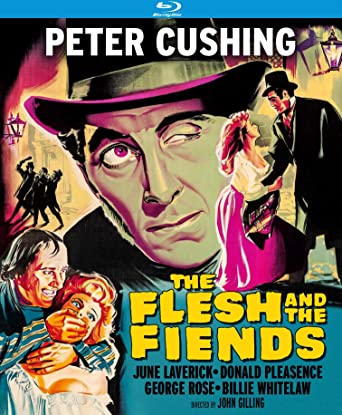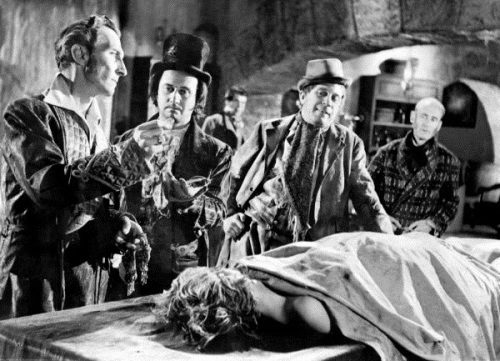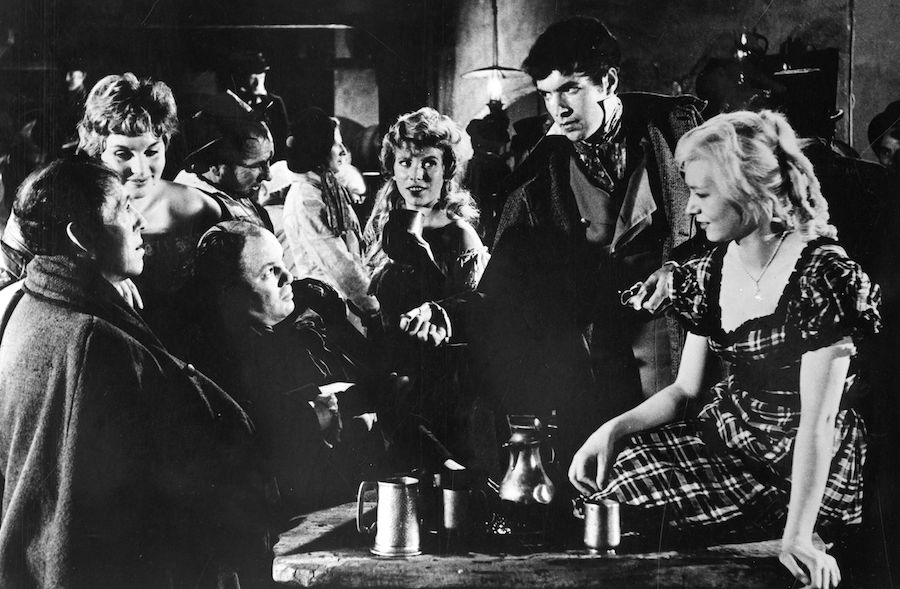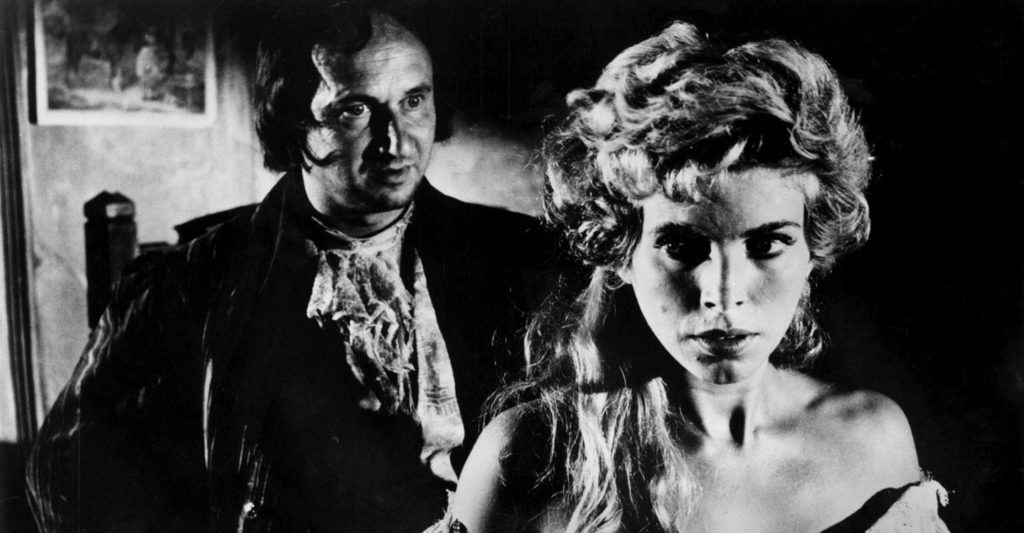An Atmospheric Thriller That Has Too Much Sympathy for the Devil
Directed by John GIlling / 1960
Blu-Ray Release Date July 7, 2020
Kino Lorber Studio Classics

The Flesh and the Fiends opens with a grave robbery. It ends with an angry torch wielding mob. In between is a tale featuring Peter Cushing as a doctor who is convinced that his experiments are a boon to humanity, whatever the cost in human lives. You’d be forgiven if you thought this sounded a lot like Frankenstien. The Flesh and the Fiends does concern itself with a doctor who creates monsters, it’s just that those monsters are human, and all too real.
The movie begins with a title card that assures us that, despite the sordid events depicted herein, IT’S ALL TRUE. And indeed, The Flesh and the Fiends is based on the real-life crimes of Mr. Burke and Mr. Hare, a pair of grave robbers and murderers who lived in Edinburgh in the 1820s. For director John Gilling (who also co-wrote the screenplay), this was his second stab at the material. He wrote the screenplay for 1947’s Horror Maniacs (aka The Greed of William Hart) based on the same events, but the British censors at the time forced him to change the names of all involved. This time around, he gets to hew more closely to the historical record.

Peter Cushing plays Doctor Robert Knox, a physician of some renown who is teaching the next generation of doctors in his Edinburgh school in 1828. He’s running up against the problem of not being able to properly teach anatomy, due to a shortage of approved cadavers for study (only the bodies of condemned criminals could be used for such purposes). To get around this supply issue, Knox uses the services of grave-robbers (who stylize themselves as “Resurrectionists”) to get more corpses, and pays them handsomely for their work. Messrs Burke and Hare, played by George Rose and Donald Pleasence respectively, witness how much money there is to be made in such an endeavour. They decide to provide the good doctor with the freshest bodies available, even if it means killing them outright.
Meanwhile, a subplot follows a young student of Knox’s, Chris Jackson (John Cairney). Jackson works as Knox’s errand boy, while struggling to keep up with his studies. He meets and falls in love with an earthy barmaid named Mary Patterson (Billie Whitelaw). The two of them have a tumultuous relationship while Jackson tries to balance his studies and his duties working for Knox with his relationship with Mary. It doesn’t go well, and things go even worse when Mary catches the attention of Burke.
For a film shot in the late 50’s, there’s a surprising amount of brutal violence shown on screen (and, in the “Continental Cut” featured on the Blu-Ray, a fair amount of nudity). When Burke and Hare dispatch their unsuspecting victims, the camera lingers long enough on the event to begin to feel exploitive. Hammer films are known for their gore, but that was in a context of stories featuring vampires, mummies, and reanimated corpses. The crimes of Burke and Hare were ALL TRUE (remember the movie’s admonition at the beginning!).

Though it was shot in black and white, unlike the famous Hammer horror films that preceded it, there’s nothing cheap looking about the movie. The production designs- sets and costuming invoking Edinburg of two centuries ago- are top notch, as is the craft involved in lighting and shooting the film.
Likewise, all of the performers bring their characters to vivid life. Cushing glides effortlessly between the roles Knox plays. He’s firm but caring with his students, tender and warm with his family, imperious and arrogant with his colleagues, and dismissive and all too incurious with Burke and Hare. Pleasence’s Hare is a weasel. In a different context he might be seen as a charming rogue, and certainly Hare sees himself that way. Billie Whitelaw plays Mary with a stunning carnality that barely conceals her vulnerability and self-loathing.
Where the movie really drops the ball is in its ending. *Spoiler warning for documented historical events.*

Burke and Hare are caught. Hare turns State’s evidence against Burke. Burke is executed for his crimes, and Hare is released. The people of Edinburgh aren’t up to forgiving Hare of his crimes, though, and he is blinded. The mob also demands to hold Knox accountable for his role in encouraging these murders. Knox, however, is absolved by the courts, defended by his family and his fellow doctors declare he was not responsible for any crimes. Knox is completely exonerated at the end of the film, and the movie ends on a happy note for the good doctor.
History has been less kind to Knox’s reputation, and for good reason. No, he didn’t commit any of the murders himself, but he might as well have. By willingly looking the other way with respect to the provenance of the bodies Burke and Hare provide, Knox signals that he doesn’t care what crimes the men commit, so long as his work goes unimpeded. Sure, it’s unfortunate that people are being killed but “they’ll serve a greater purpose in death than they did in life,” as Knox’s servant states plainly. Knox is warned about the possibility that the corpses he’s paying for are meeting violent ends, but he brushes the warnings aside. He is as complicit in the murders as the men committing them.
But The Flesh and the Fiends has no problem letting Knox off the hook at the end. When Burke and Hare’s crimes finally come to light, Knox’s family rallies around him. His niece comes to his defense, even after she tries to tell Knox that there is a strong possibility of foul play earlier in the film. She convinces Knox’s assistant to speak on his behalf before the medical board- a board comprised of men whom Knox has belittled and insulted throughout the film. When the board votes not to punish Knox, it is treated as a triumph for the doctor, not as a repudiation of a system that protects its own from consequences.
Kino Lorber’s Blu-Ray release comes with two different cuts of the film. The main one is the full, unedited “continental cut,” made for the European market. This cut features a few shots with nudity, and the violence is a little more explicit. The other is a cut, also known as The Fiendish Ghouls and Mania, was made for the UK and American markets. It also has a feature-length commentary track by film historian Tim Lucas and a collection of trailers.

